Photo

Yinka Shonibare, The British Library (2014), Museu Afro-Brasil
Imigrantes que trouxeram contribuições valiosas para a cultura britânica têm os nomes estampados nas laterais da maior parte dos 6.225 livros desta instalação. O escultor Eduardo Paolozzi, nascido na Escócia e filho de pais italianos, aparece ali na terceira prateleira, próximo a escritora Monica Ali, de Bangladesh, e ao artista indiano Raqib Shaw. São 6.225 volumes no total, todos eles forrados com um tecido que se tornou um símbolo de uma suposta identidade africana – embora fosse inspirado no batik indonésio e produzido na Holanda e na Inglaterra.
A obra do artista britânico-nigeriano Yinka Shonibare é uma das mais interessantes da mostra Africa Africans, em cartaz no Museu Afro Brasil até 30 de agosto.
0 notes
Photo
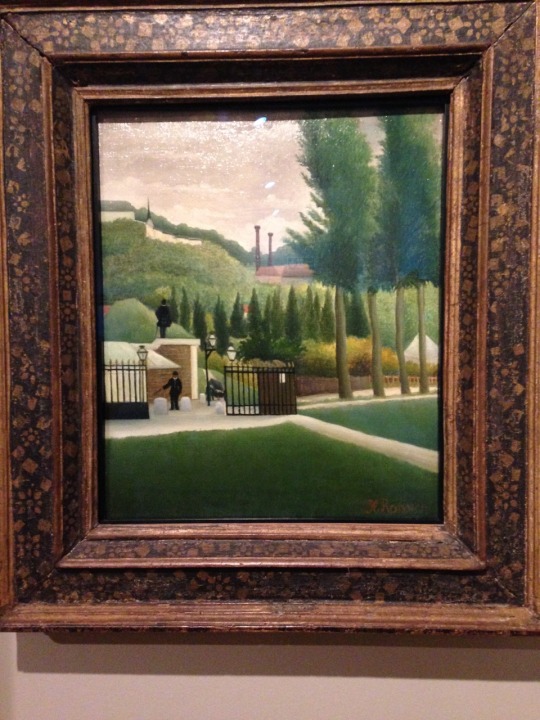
Henri Rousseau, The Toll-Gate (1890), The Courtauld Gallery, London
É sempre uma surpresa se deparar com uma pintura de Henri Rousseau próxima aos impressionistas, ou mesmo às telas de Paul Gauguin feitas durante seu refúgio pelas Ilhas do Pacífico. Se a temática primitiva pode sugerir uma semelhança com o lendário pintor francês, a obra de Rousseau tem pouco em comum com qualquer outra produção da época. Além de romper com técnicas tradicionais de representação, como a perspectiva e relações tonais, sua visão apocalíptica da civilização moderna também era bem distinta das ideias simbolistas de Gauguin e outros artistas do fim do século 19. Embora o simbólico também esteja bastante presente em Rousseau, os símbolos não transcendem ao mundo das ideias, mas materializam-se em forma de imagens.
A cena retratada nesta pintura possivelmente foi inspirada em uma das entradas para a cidade de Paris, onde Rousseau, também conhecido como le Douanier, trabalhava como funcionário da alfândega nessa época. Se florestas e animais são elementos recorrentes em sua obra, aqui a temática selvagem aparece mais sóbria. Mas há uma certa tensão entre a paisagem natural e os muros da fronteira, além de um contraste grande entre a escala das árvores e as figuras humanas, que parecem oprimidas.
Influência importante para artistas como Picasso, Robert Delaunay, Fernand Léger e até Giogio Morandi, Henri Rousseau nasceu em 21 de maio de 1844. Parabéns para ele!
0 notes
Photo

Gilt (1983), Robert Rauschenberg, Museo Thyssen-Bornemisza
4 notes
·
View notes
Photo
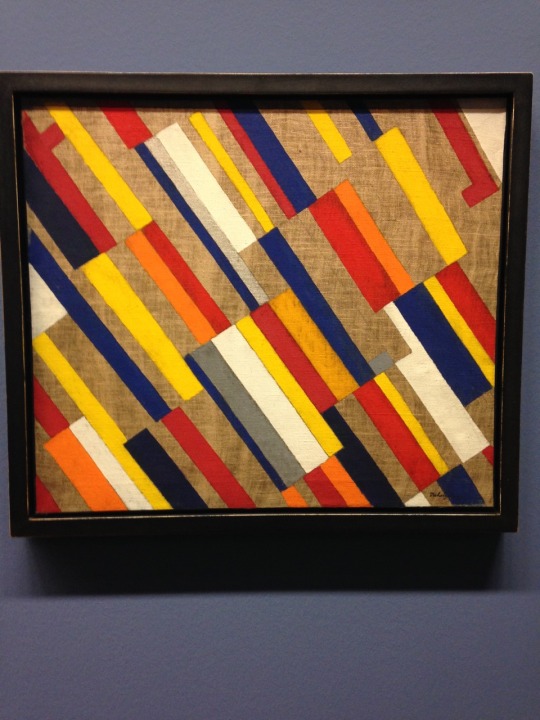
László Moholy-Nagy (1895-1946), Hungarian Fields (1919), Albertina Museum
This early painting by the Hungarian artist was made before he moved to Berlin, where he would become known as a member of the Bauhaus school, and later the director of the New Bauhaus in Chicago (USA). László Moholy-Nagy's writings about space would have a strong influence in many art movements.
"I am convinced that sooner or latter we shall have a genuine space system, a dictionary for space relationships, as we have today our color system or as we have our sound system for musical composition. This has another significance, too; it is not enough that the architects will be clear about spatial relationship and spatial composition but, if their work is to be appreciated, the layman, the client, must know about space, too." ('The New Bauhaus and Space Relationships', 1937)
0 notes
Photo

Jackson Pollock, Number 16 (1950), MAM-RJ, 56,7 X 56,7 cm.
Além da surpresa de ver uma das "drip paintings" de Pollock na coleção do Museu de Arte Moderna do Rio de Janeiro, a legenda ao lado revela outra informação curiosa. A tela foi doada ao MAM em 1952 pelo empresário e político americano Nelson Rockefeller, figura importante durante a criação dos museus de arte moderna no Rio e em São Paulo, no final da década de 1940. É também uma das poucas obras que sobreviveu ao trágico incêndio que destruiu 90% do acervo em 1978 (ufa!).
A pintura de Pollock integra a exposição “Poucas e boas…! Obras da coleção internacional do MAM”, em cartaz até 17 de maio.
1 note
·
View note
Photo
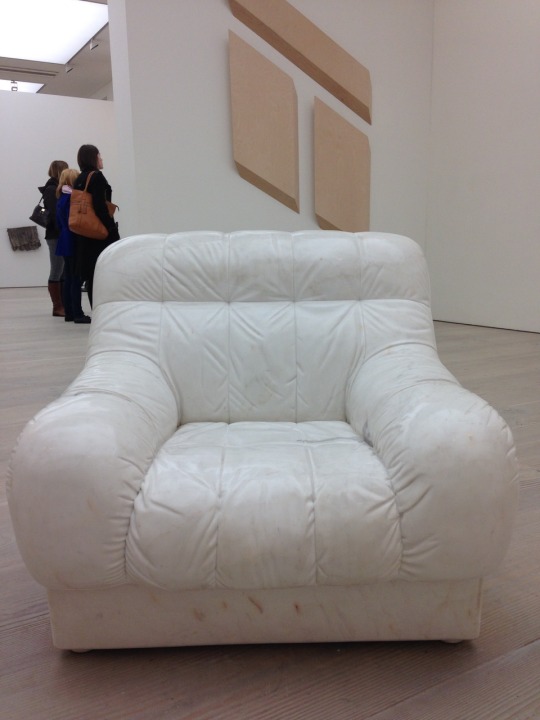
Ai Weiwei, Sofa in White, 2011 (marble). Private Collection (seen and photographed at Saatchi Gallery in November, 2014).
'We are a productive reality. We are the reality, but that part of reality means that we need to produce another reality.' (Ai Weiwei, in Ai Weiwei Speaks with Hans Ulrich Obrist)
0 notes
Photo

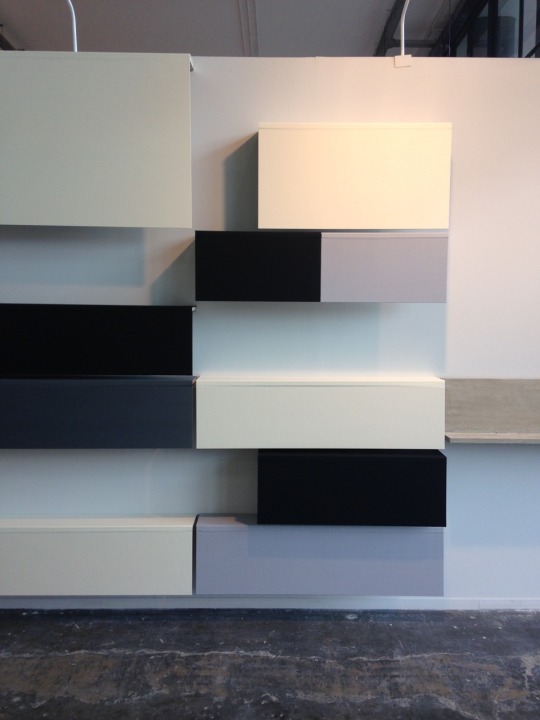
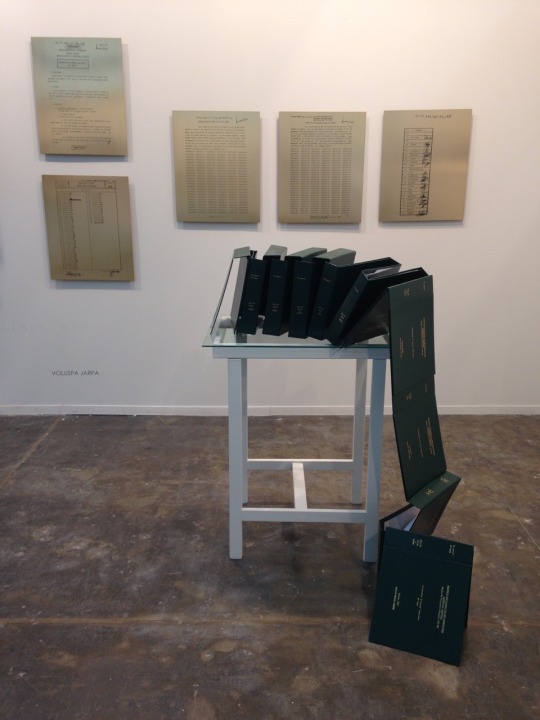
Fernanda Fragateiro (on top), Unbuild, 2010; Voluspa Jarpa (above), SP Arte, 2015
‘They are everywhere in contemporary galleries, regularly uncategorized,
commonly ironic if not downright comic, sometimes edgy, outrageous,
frequently enthralling ... those foreclosed book forms that manifest a no longer
viable work in any verbal oeuvre. In their often amusing refusal of all normal
use, such sculptural rather than functional books work against themselves
when isolated for display’ (Garrett Stewart, ‘Bookwork as Demediation’).
0 notes
Photo

Francisco José de Goya, Portrait of Fernando VII (1808), Masp
Happy birthday to Goya, born on March 30th in 1746.
0 notes
Photo
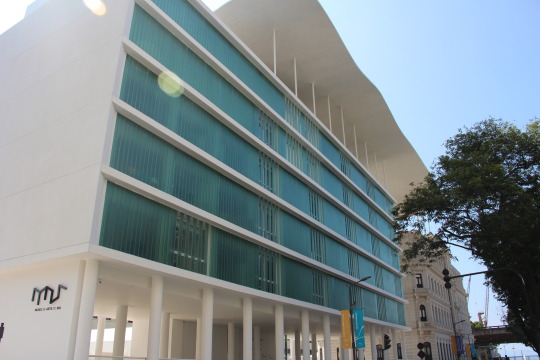
Museu de Arte do Rio (MAR), projeto de Thiago Bernardes, Paulo Jacobsen e Bernardo Jacobsen (2013)
Uma cobertura de 800 toneladas de concreto que simula o desenho do mar em movimento explica o nome do museu, inaugurado em 2013 como parte dos projetos de revitazação da zona portuária do Rio de Janeiro. O conjunto reúne três construções revitalizadas: o Palacete Dom João VI, com oito salas de exposições; as marquises do antigo terminal rodoviário, usadas para abrigar a reserva técnica; e o antigo hospital da Polícia Civil, onde está a Escola do Olhar. Com um programa voltado para alunos e professores da rede muncipal de ensino, ela é a base de todo o projeto.
Leia mais sobre o projeto do museu aqui.
0 notes
Photo
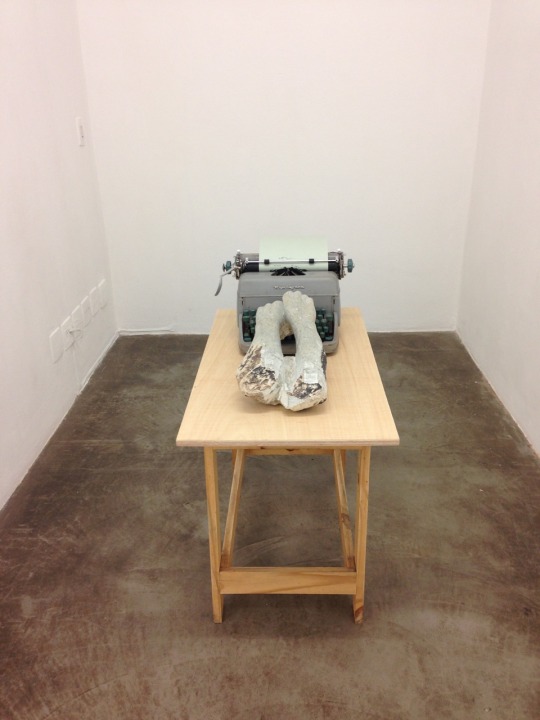
Marco Paulo Rolla, Tempo Suspenso (2007), pedra sabão e maquina de escrever, Galeria Vermelho
When writing is nothing but a mechanical and unthoughtful work.
0 notes
Photo
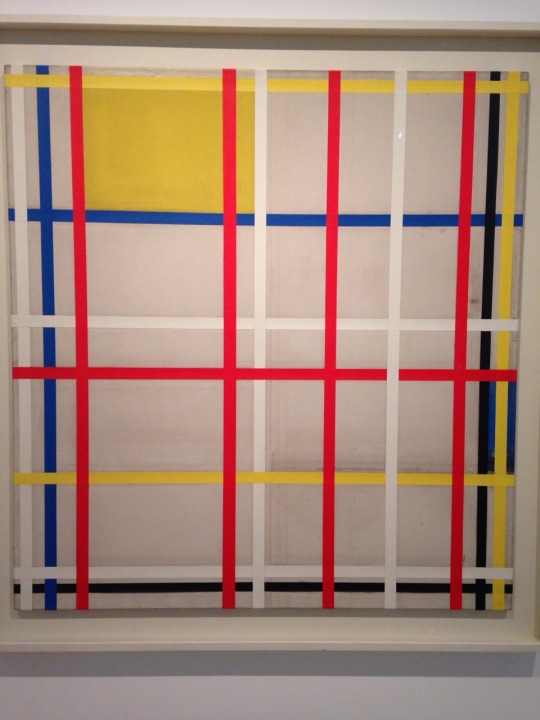
Piet Mondrian, New York City, 3 (unfinished), 1940-42, Museo Thyssen-Bornemisza
Exibida pela primeira vez em uma exposição organizada pelo MoMA em 1983, esta tela foi encontrada no ateliê de Mondrian em Nova York logo após sua morte. Nessa época, o artista holandês passou a usar fitas adesivas coloridas em seus experimentos com linhas verticais e horizontais em amerelo, azul e vermelho. Sua intenção era delimitar os espaços de cores para depois substituir as fitas por linhas pintadas do mesmo tamanho. Mas nesta versão inacabada, pertencente ao acervo do Thyssen-Bornemisza, em Madri, ainda é possível ver algumas das faixas coladas sobre a tela.
Principal nome do movimento De Stijl, Piet Mondrian nasceu hoje, há 143 anos. A partir de outubro, ele é tema de uma retrospeciva no CCB de Brasília, exibida depois em Belo Horizonte, Rio de Janeiro e São Paulo.
0 notes
Video
Dias & Riedweg, O Espelho e a Tarde (2011), Galeria Vermelho
A man holding a mirror walks through the narrow streets of the Complexo do Alemão, in Rio de Janeiro. His route is seen on a triptych of screens, which display in a loop the very same sequence recorded from different angles. Excerpts from the sequence also overlap one over the others, creating an intriguing effect of a fragmented reality. Although the very way in which the sequence is shown can easily be related with this notion of a multiple and floating reality, it is with the mirror held by the man that this aspect is reinforced. As a medium which reflects and simultaneously distorts the world, the mirror is a powerful symbol of the way this social reality is often misrepresented and misunderstood by most of us.
The videoinstallation was originally made in 2011, when the pacification process had just started in this impoverished community. Since then, the Complexo do Alemão went through a radical urban transformation, and their people’s routine has been changing dramatically. O Espelho e a Tarde is part of the series Pequenas Histórias de Modéstia e Dúvida, which gathers three more videos that the artists have done on the streets of Rio over the last 18 years. This intriguing work can be seen in their exhibition Histórias Frias e Chapa Quente, shown in São Paulo until February 14th. It is always worth to follow what these two thoughtful and provocative artists have been doing.
0 notes
Photo

Édouard Manet (1832-1883), Corner of a Café-Concert, probably 1878-80, The National Gallery
Happy birthday to Édouard Manet, the pioneer of modernism and probably its greatest master, born #onthisday in 1832. Originally painted as the right half of another work, Corner of a Café-Concert was cut and radically changed by him afterwards. The dancer on the background, along with the musicians, were only included on the scene subsequently.
Read more about the origin and development of this work here: http://www.nationalgallery.org.uk/paintings/edouard-manet-corner-of-a-cafe-concert
0 notes
Photo
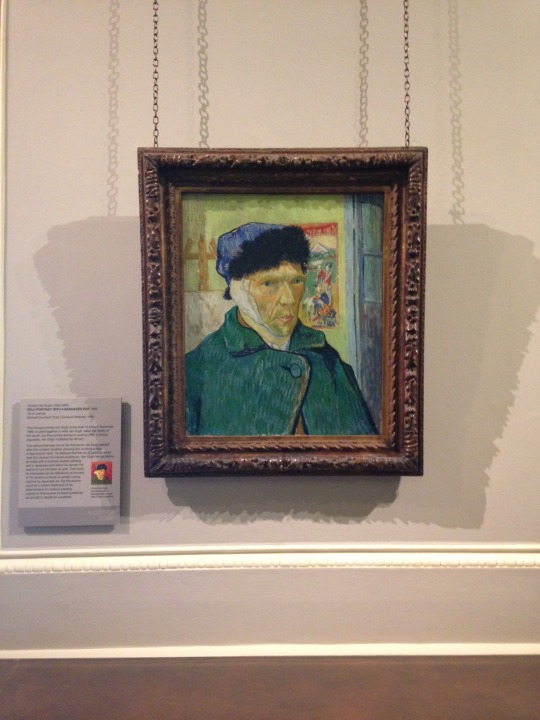
Vincent Van Gogh, Self-Portrait with Bandaged Ear, around 17th January 1889. The Courtauld Gallery
The museum selfie day, celebrated for the first time this year on the January 21st, just made me think about one of the oldest and richest genres in art history: the self-portrait. When exactly did the self-portrait become the selfie? What makes these two genres so different from one another?
Although widely disseminated in different periods and among several artists, self-portraiture hasn’t been yet very much discussed as a genre. Two recent books (A Face to the World and The Self-Portrait: a Cultural History ) investigate the self-portrait as an independent genre, but this theme has remained overlooked for a long time.
My tribute to the original practice of selfies is to Van Gogh’s masterpiece Self-Portrait with Bandaged Ear, made by the artist right after having mutilated his own ear. See more information about this painting here: http://galleryblog.courtauld.ac.uk/2012/07/26/spotlight-on-a-masterpiece/
#museumselfie#self portrait#self portrature#museumvoyeur#van gogh#modernart#thecourtauldgallery#somerset#londonart#muse
0 notes
Photo

Paul Cézanne (1839-1906), The Avenue at the Jas de Bouffan, around 1871, The National Gallery
“Cézanne would say, and he would explain that the landscape had to be centered neither too high nor too low, caught alive in a net which would let nothing escape. Then he began to paint all parts of the painting at the same time, using patches of color to surround his original charcoal sketch of the geological skeleton. The picture took on fullness and density; it grew in structure and balance; it came to maturity all at once. “The landscape thinks itself in me”, he said, “and I am it's consciousness”' (Maurice Merleau-Ponty, Cézanne’s Doubt).
Modern art would certainly not be the same without Paul Cézanne, born #onthisday in 1839.
0 notes
Photo

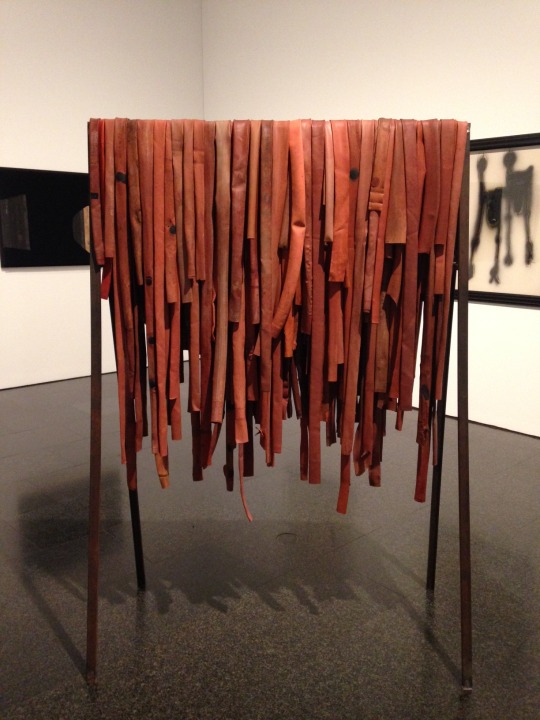
Carol Rama, La macelleria (1980, alto) e Presagi di Birman (1970), MACBA, Barcelona
Ao longo dos últimos 70 anos, a produção da italiana Carol Rama acompanhou em paralelo alguns dos principais movimentos artístico que predominaram no país. Embora tenha se cercado de influências como o concretismo dos anos 1950 e a arte povera nas décadas de 1960 e 1970, Rama não chegou a fazer parte ou se firmar como um nome importante em nenhum desses grupos. A dificuldade em classificar seu trabalho contribuiu para deixar a artista fora da historiografia oficial da arte neste período. Até receber um Leão de Ouro em Veneza em 2003 pelo conjunto da obra, Carol Rama ainda era praticamente desconhecida em outros países.
Aos 96 anos, ela é tema de uma retrospectiva no Museu de Arte Contemporânea de Barcelona (MACBA), em cartaz até 22 de fevereiro. A mostra tem um tom bem crítico sobre a forma como artistas mulheres são excluídas do relato hegemômico da história da arte, reduzidas, muitas vezes, a categorias separadas como “arte feminina”. No caso de Carol Rama e em muitos outros, a ausência de um envolvimento com um grupo ou estilo específico pode estar mais associado a um discurso de exclusão política do que a uma escolha artística.
Com mais de 200 obras, a retrospectiva contempla todas as fases da produção de Rama: as aquarelas eróticas dos anos 1930 e 1940 censuradas pelo governo italiano; as pinturas geométricas da fase concreta na década de 1950; as esculturas com materiais não-convencionais, como pneus de bicicleta, influência direta da arte povera. Entre os poucos elementos que se mantém nesta trajetória estão os retratos de uma figura feminina com a língua pontiagura, desta vez cercada por pedaços de animais, como em La Macelleria (1980).
Difícil não associar esta imagem com as bonecas de plásticos decepadas de Cindy Sherman na série Sex Pictures, de 1992. Ou não lembrar da frase do coletivo Guerrilla Girls, que ironizou que a vantagem das artistas mulheres é saber que sua carreira ainda poderá despontar quando tiver oitenta anos, incluída nas edições revistas da história da arte. Mesmo em paralelo ao discurso oficial da arte recente, Carol Rama parece ter deixado influências suficientes na produção contemporânea.
3 notes
·
View notes
